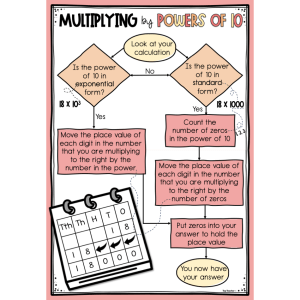Description
What’s the Problem? Worksheets offer students a clear and structured way to practise solving real-world mathematical problems using modelling, operations and strategic thinking. Each worksheet encourages students to read a problem carefully, identify the relevant mathematical operations, and represent their thinking clearly through number sentences and calculations.
This resource helps students develop fluency with the language of word problems, improve their confidence in breaking down questions, and apply effective problem-solving strategies. The worksheets promote mathematical reasoning and support students in making connections between numbers, operations and real-life contexts. The scaffolding provided in each version helps students engage with the content at their level while working towards mastery.
There are three differentiated versions of the worksheet included, each increasing in complexity. This makes the resource ideal for use across a range of ability levels and allows for targeted instruction and independent practise. Whether completed as a warm-up, small group task or part of your problem-solving lesson sequence, these worksheets support students in building foundational mathematical modelling skills.
Key Learning Outcomes:
- ✅ Interpret and analyse real-world word problems
- ✅ Select the correct operations to solve a problem
- ✅ Use number sentences and diagrams to represent thinking
- ✅ Apply mental and written strategies to calculate solutions efficiently
What’s Included:
- 3 differentiated worksheets (increasing complexity)
- Real-life scenarios requiring modelling and calculation
Materials Needed:
- Printed worksheet sets
- Pencils or student whiteboards
- Optional manipulatives for modelling (counters, blocks, number lines)
How to Use:
- Introduce the concept of mathematical modelling by working through a sample problem together.
- Provide each student with a worksheet level suited to their ability.
- Guide students to read each word problem carefully and identify what is being asked.
- Have students write a number sentence, choose an efficient strategy, and solve the problem.
- Review answers together and discuss different strategies used to reach the same solution.
Ideas for Classroom Use:
- 💡 Use as a warm-up activity to focus on mathematical language and comprehension
- 💡 Integrate into maths rotations for targeted practise or strategy groups
- 💡 Display solved problems and diagrams to highlight different approaches
- 💡 Extend advanced learners by having them write their own word problems based on given operations
Top Teacher Tips:
- 💛 Use think-alouds when modelling how to break down and solve word problems
- 💛 Provide a word problem strategy checklist for students to refer to independently
- 💛 Encourage students to highlight key information and underline the question being asked
What’s the Problem? Worksheets are a versatile and purposeful tool for teaching problem-solving, building number fluency and supporting mathematical thinking across all ability levels. Perfect for reinforcing key concepts while making maths relevant and accessible!
Additional information
| Number of Pages | 3 |
|---|---|
| File Format | |
| Australian Curriculum Code | AC9M4N08, AC9M5N06, AC9M5N07, AC9M5N09, AC9M6N09 |
Australian Curriculum V9
F - 6
Lorem ipsum dolor sit amet, consectetur adipiscing elit.
Lorem ipsum dolor sit amet, consectetur adipiscing elit.
Lorem ipsum/ Lorem ipsum/ Lorem ipsum
Lorem ipsum dolor sit amet, consectetur adipiscing elit.
Lorem ipsum dolor sit amet, consectetur adipiscing elit.
Lorem ipsum/ Lorem ipsum/ Lorem ipsum
Lorem ipsum dolor sit amet, consectetur adipiscing elit.
Lorem ipsum dolor sit amet, consectetur adipiscing elit.
Lorem ipsum/ Lorem ipsum/ Lorem ipsum
Lorem ipsum dolor sit amet, consectetur adipiscing elit.
Lorem ipsum dolor sit amet, consectetur adipiscing elit.
Lorem ipsum/ Lorem ipsum/ Lorem ipsum
Lorem ipsum dolor sit amet, consectetur adipiscing elit.
Lorem ipsum dolor sit amet, consectetur adipiscing elit.
Lorem ipsum/ Lorem ipsum/ Lorem ipsum



